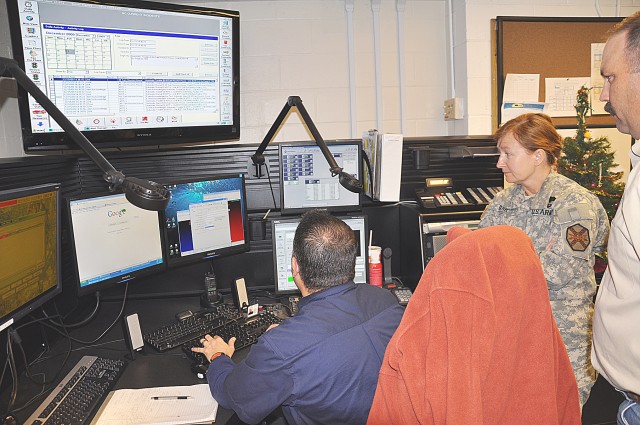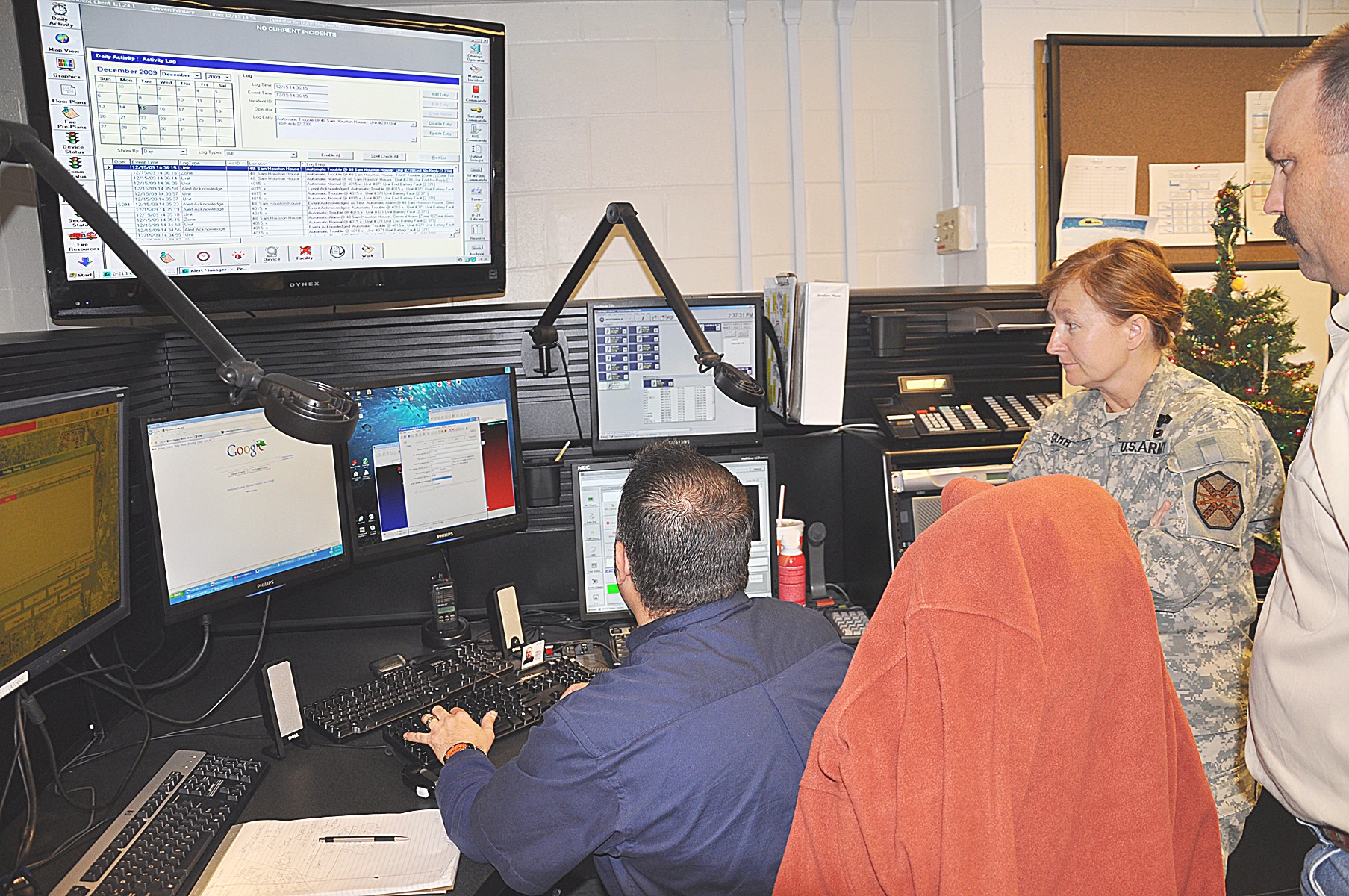FORT SAM HOUSTON, Texas -- In the United States, 911 has been the universal emergency number for all telephone services, and a key component of the country's emergency response and disaster preparedness system, for more than 40 years. However, the advent of wireless- and Internet-based phone systems has meant the old standby needed an upgrade.
Mandated by the Federal Communications Commission, Enhanced 911 has been the answer allowing systems to identify telephone numbers and locations of calls made from mobile phones, Voice over Internet Protocol used by computer-based phones and Text Telephone Devices used by deaf, hard-of-hearing, or speech-impaired callers.
Fort Sam Houston brought its emergency response system up to date recently with a new E911 system, investing $750,000 and promising greater precision and faster response times on post.
The occasion was marked by a ribbon-cutting ceremony attended by FSH Garrison Commander Col. Mary E. Garr Dec. 15.
"Fort Sam Houston is the first U.S. Army installation in Texas to get the E911 system," said Steve Martin, public safety communications supervisor. "We'll now be able to capture all 911 calls from commercial numbers, post housing and cell phones throughout Fort Sam and Camp Bullis."
In addition, the new system will allow dispatchers to gain a wide variety of information about the caller as soon as the 911 call is picked up by the system. One feature of the E911 system allows for automatic number and location identification, and even brings up the entire past call history associated with the incoming number.
"We can even get all the information from wireless and VoIP phone numbers and pinpoint the location of a cell phone to within three feet," Martin said. "In case the dispatcher wasn't able to understand the caller, there is an automatic playback feature as well."
The new system is also equipped with ProQA software which guides the dispatcher through the process of collecting vital information from the caller, obtaining the patient's status, choosing an appropriate dispatch level, and instructing the caller with medically approved protocols until the dispatched units arrive at the scene.
"ProQA provides a script for the dispatcher to assist the caller to help them until police, fire or (emergency medical services) arrive," Martin added. "This helps us provide the very best in service and speed, as the correct dispatch levels are usually determined quickly."
"The ProQA system is incredible," said Sheldon Day, one of the three emergency service dispatchers on duty. "I had a man call me from his car who was having a heart attack. The software walks you through the incident and helps us to keep the caller calm and informed. I found out later the man ended up having quadruple bypass surgery and is doing fine now."
Along with an improved system comes improved training. "We have 10 dispatchers here and each has gone through more than 100 hours of training in the E911 system," Martin said.
"What's unique about the system is that we'll do more than just a typical 911 responder that just takes the call and sends it along somewhere else," said dispatcher Michelle Aguilar.
"We start the call and see it all the way through," added Dispatcher Mike Markovitch, who has helped two women through childbirth with the new system. "This system is a great benefit to people here."
Incorporated into the E911 system are mobile data terminals in each patrol vehicle, and Martin said that this feature, along with an automated vehicle locater which comes online in the next few months, will allow dispatchers to know where all their resources are at any time.
"By knowing where all our vehicles are, we can send the closest one to respond to an emergency call any where on Fort Sam Houston or Camp Bullis," Martin said. "This further enhances our response times."
The ramp up to the E911 system launch has taken about two years and has been done in phases, Martin said, and brings it up to par with Bexar County and San Antonio in terms of dispatch functions and equipment.
"This is really a far cry from just a year ago," Garr said as she looked over the new system and talked with the dispatchers. "It really has come a long way."


Social Sharing